Patients as Customers: Hospitals Play Catchup
Winners are betting on data-driven insights, personalized experiences, and relationships built on trust.
// By Lindsay R. Resnick //
 With today’s constant stream of digital health tools, it’s never been easier or faster for customers to take charge. They’re following a path to care where they feel important and are treated well — and they’ll avoid hospitals that fall short.
With today’s constant stream of digital health tools, it’s never been easier or faster for customers to take charge. They’re following a path to care where they feel important and are treated well — and they’ll avoid hospitals that fall short.
As the health care industry undergoes historic transformation, consumers are quickly becoming empowered to take responsibility for their health care decisions. They manage benefit choices, budget out-of-pocket expenses, choose providers, and navigate sites-of-care. Patients find themselves front and center in their role as health care customers. Empowered patients compare prices, quality, convenience, and outcomes.
Inside the walls of most hospitals, the mention of “customer” when referring to patients still gets raised eyebrows. But the “retailization” of health care means patients are in control. They set expectations based on their best, most recent customer experience, inside and outside the health care ecosystem. This new era of self-sufficient, activist patients means that they scrutinize marketing messages, conduct their own research, and share their opinions.
In a consumer-empowered world, what can health systems do better to attract and retain patients? Resnick breaks it down to four consumer demands: Know me. Motivate me. Help me. Keep me.
Know Me
What is it going to take for hospital systems to become truly customer-centric and move patients to the status of customers by knowing them and serving them better than competitors?
For many hospitals, the patient journey consists of disconnected data, events, and actions generated by a fragmented, often siloed, organizational structure. Future success starts with data. Across the health care landscape, the ability to gather, store, analyze, and interpret customer data is table stakes. The ability to ingest and structure big data and create actionable insights that inform strategy and drive in-market tactics is a huge differentiator in today’s intensely competitive hospital sector.
The challenge for hospitals is to integrate and manage data by looking at patients as customers — not as EMR records, billing codes, or claims. For many hospitals, consumer data is a big mystery. To figure it out, ask yourselves these questions:
- Is data directly related to understanding patients in a way that will help us acquire and retain the best patient-customers?
- Is data informing decisions that are tied to our core objectives, strategies, and services?
- Is data being leveraged to influence customer behavior and drive in-market activities that deliver a positive ROI?
- Are data-driven patient engagement tactics realistic in terms of our ability to deliver (resources, timing, and capabilities)?
Realizing consumer data’s real value, while navigating the maze of data security and privacy challenges, is no easy task. It means managing vast amounts of data generated inside and outside the organization that varies by type, speed, volume, and trustworthiness. But enriched data-driven insights ― demographics, purchasing habits, lifestyle or life stage attributes, and attitudinal or behavioral indicators ― allow health systems to create tighter, better orchestrated patient engagement by knowing where patients go, what’s important to them, who’s at risk of leaving, whom they’re talking to, and what they’re saying.
Consumer data creates a better understanding of a hospital’s market segments. It helps construct a unified view of the customer to help attract and retain the best patients for the health system. It also enables sophisticated approaches to service-line development and marketing outreach by linking core strategies to in-community tactics. The data-driven hospital’s payoff is personalized, lower-cost/higher-yield patient relationships that improve bottom-line performance and increase brand preference.
Motivate Me
Winning hospital brands are those that forge emotional relationships with their customers to inspire better health decisions. These brands believe that nothing is more personal than someone’s health. They know what’s important to patients, what truly matters to them as they make choices, and why they do what they do.
Changing behavior means moving away from tedious, bureaucratic educational-based efforts overloaded with complex clinical instructional messaging about conditions and treatment options. To change behavior, there has to be a shift away from features and functions to gut-level emotional appeals that move people to act and engage. You’re not only fighting serious medical conditions — you’re also fighting human nature. It’s about connecting with customers around personal, relevant motivations and deep, sometimes even unconscious, desires and values like freedom, self-esteem, happiness, personal goals, or the ability to be a better parent or partner.
Effective patient engagement is about helping individuals make smart, personalized choices in a health care environment defined by significant out-of-pocket financial responsibility and complicated care delivery choices. At a time when “own your health” is a popular talking point, hospital systems need to step up and support the underlying belief that motivated health consumers will help drive better care, better outcomes and, ultimately, better value. To get there, monotone off-the-shelf programs to improve patient health around chronic conditions, prevention, early detection, or wellness aren’t enough. Success comes when you can get individuals to respond, interact, and engage in a meaningful two-way relationship driven by emotion and built on trust.
Help Me
Patient empowerment is grounded in an attitude of customer respect. It cuts across every aspect of a customer’s experience with a hospital, its employees, and its services. It’s the sum total of everything they see, hear, feel, and experience as part of their dealings with their providers of care. It means interacting with people on their terms, with actionable content, and through communication channels they prefer. Assess your customer effectiveness by asking the central question: How well does every touchpoint respect patient needs, drive engagement, promote adherence, and ultimately, improve satisfaction?
“Assess your customer effectiveness by asking the central question: How well does every touchpoint respect patient needs, drive engagement, promote adherence, and ultimately, improve satisfaction?”
Health care consumers demand access to comparative, accurate information for cost, quality, and satisfaction measures about their doctors and hospitals. Tomorrow’s hospital customer will talk about you, review you, check your prices and quality, and recommend you (or not). They want to be engaged in their health. With an abundance of choice, their patient-customer experience will determine how they assess your value as well as what your brand stands for in the community.
In hospital markets, unlike transactional retail markets, interactions and experiences need to focus on relationships. To retain patients and establish a long-term connection of mutual value for future customer interactions, moving from transactional to relational is essential. Engaging patients with a superior, loyalty-based customer experience will be a key differentiator separating hospital winners from losers in the future. Those hospitals able to bring customer-centric experiences to life and establish meaningful, individualized relationships will emerge as market leaders with the advantage of knowing that empowered customers are willing to pay more for a better experience. Also, importantly, patient experience is a bottom-line issue for Medicare reimbursement, star ratings, and value-based payment arrangements.
Keep Me
Whether you call them patients, consumers, or customers, people need to feel they are valued and respected. So how do you get there?
- Be honest and authentic when setting expectations.
- Be compassionate and empathetic across clinical and non-clinical interactions.
- Instill an employee culture of “do the right thing” across the enterprise.
- Be a knowledgeable advocate and champion for your customers as they navigate the complexities of our health care system.
It’s about building trust. A relationship of trust grows out of personalized, relevant patient journeys; humanized clinical pathways; and brand touchpoints that respect customers’ needs and drive engagement. Health care today is defined by personal responsibility, and the burden falls largely on patients to deal with intimidating clinical and financial decisions. Patients want and need answers. As customers, they deserve them.
“Whether you call them patients, consumers, or customers, people need to feel they are valued and respected.”
The hospital marketplace has never been more competitive, and superior customer experience that helps consumers successfully navigate the health care landscape is no longer an option: It’s survival. Winning organizations will employ strategies built on a foundation of data-driven personalization and brand experiences that drive trusted relationships. The payoff is high satisfaction ratings, patient loyalty, and increased lifetime value.
Lindsay Resnick is executive vice president of Wunderman Thompson Health. Email him at lindsay.resnick@wundermanthompson.com and follow him on Twitter @ResnickLR.
